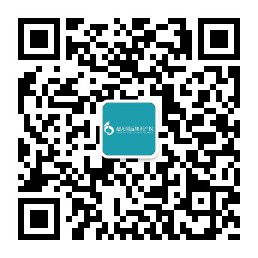- Home
- About Us
- Professionals
- Professionals
- Professionals

- Services
- Services
- Practice Areas
- Information Security

- News
- Database
- Database
- References
- Foundin Cases
- Related Websites

- Contact
Export Control Requirements When Assigning Chinese Patents and Patent Applications to Foreign Entities
Aaron R. Wininger & Xiao Han (Nicole)
Aaron R. Wininger is a Senior Attorney and Director of China Intellectual Property Practice of Schwegman Lundberg & Woessner.
Xiao Han (Nicole) is a patent attorney and attorney-at-law at Foundin IP in Beijing.
Besides the requirement for a foreign filing license (sometimes referred to as a confidentiality review) under Article 19 of the Patent Law to file a Chinese patent application abroad, there is an additional requirement under China’s Export Control regime to assign a Chinese patent or patent application to a foreign entity per Article 10 of the Patent Law. Under Chapter III of the Foreign Trade Law of the People’s Republic of China (2022), technologies are divided into three categories: freely exportable, restricted and prohibited. Patentees and applicants can look up how their technologies are categorized in the Catalogue of Technologies Prohibited and Restricted from Export from China. Examples of prohibited technologies include rare earth extraction and separation technology and satellite data encryption technology. Examples of restricted technologies include toxin strains for the production of oral rotavirus, aircraft tire manufacturing technology, and certain LIDAR systems.
Note that even if a Chinese patent application or patent covers a freely exportable technology, the China National Intellectual Property Administration (CNIPA) will still need a registration certificate from the Ministry of Commerce (MOFCOM) to record the assignment from a Chinese entity to a foreign entity. This article will discuss the procedures to obtain a registration certificate or export certificate for freely exportable and restricted technologies, respectively, and conclude with some example scenarios involving multinationals with Chinese inventors.
Freely Exportable Technologies
Even if a technology is not subject to export control, a Chinese patent applicant or patentee will still need to obtain a registration certificate from a local branch of MOFCOM. Without this certificate, the China National Intellectual Property Administration (CNIPA) will not record an assignment to a foreign entity. While each local branch of MOFCOM may have slightly different requirements to issue the registration certificate, you will generally need a signed technology transfer contract that includes contract number, contract title, transferor, transferee, technology user, summary of the contract, contract amount, payment details, patent number, description of the technical field, and validity period. After filing with MOFCOM, the applicant should receive the registration certificate of technology export contract within 3 working days.
Once the applicant receives the registration certificate, the applicant can submit it to CNIPA along with the technology transfer contract and a power of attorney. CNIPA should then record the assignment within 1 – 2 weeks.
Restricted Technologies
The process for restricted technologies is more complex. Initially, the patent applicant or patentee must submit an application for technology export to a local provincial-level MOFCOM branch before an export contract is signed. Within 30 working days, MOFCOM should issue a letter of intent for approval of technology export and then a technology export contract can be signed. After signing the contract, a request for technology export license can be submitted with MOFCOM with a copy of the contract, letter of intent, list of exported technical data, and documents certifying the legal status of the contracting parties. MOFCOM should issue the technology export license within 15 working days, at which point the contract is effective.
Once the applicant receives the technology export license, the applicant can submit it to CNIPA along with the technology transfer contract and a power of attorney. CNIPA should then record the assignment within 1 – 2 weeks.
Scenarios Involving Multinationals (MNC) with Chinese Inventors
Chinese Inventor Employed by a Chinese subsidiary (i.e., Wholly Foreign Owned Enterprise or WFOE) of an MNC Assigning to the Subsidiary
Under the Patent Law of China, any inventions by a Chinese inventor belong to the employer, which would be the subsidiary, which is a Chinese entity. Accordingly, no export control permissions are needed.
Chinese Inventor Employed by a Chinese subsidiary of an MNC but Assigning to the MNC or Other Foreign Entity (e.g., IP holding company)
Under the Patent Law of China, the invention belongs to the subsidiary and not the MNC as the inventor is employed by the subsidiary and not the MNC. Export control permissions are needed for transferring the patent application rights from the subsidiary to foreign entity. However, in practice, if the initial applicant on the Chinese patent application is listed as the MNC or other foreign entity, CNIPA will not require a copy of the registration certificate or technology export license. Note though that the transfer may not be legally effective under Chinese law, which may cause significant problems down the road in an acquisition or litigation, etc. Accordingly, best practice in this scenario is to file first under the name of the subsidiary, apply for the certificate or export license, and then record an assignment from the subsidiary to the MNC or other foreign entity.
Chinese Inventor Employed by a Chinese subsidiary of an MNC, Initial Applicant is the Chinese Inventor and Later Assigns to MNC or Foreign Entity
Under this scenario, export control permission is required and CNIPA will require the certificate or license before recording an assignment from the inventor to the MNC or other foreign entity.
Chinese Inventor Employed by an MNC and Resides and Invents in the United States and Files First in China
As the invention was made in the United States, no export control permissions are required from China to file a Chinese application in the name of the MNC in China or in the name of the inventor. However, if filed in the name of the inventor, CNIPA will require a certificate or license to assign the patent application to the MNC or other foreign entity. In this case, the applicant may consider providing relevant documents to prove that the invention was indeed invented in the U.S. rather than in China. However, in practice, it may be easier to get the certificate or license than proving invention in the United States.
The Best Practice for Success
While CNIPA may not always require export permissions as indicated by a technology export license or registration certificate, failure to obtain one could lead to challenges to ownership in the future. For example, in extreme cases, failure to properly secure title to Chinese-originated inventions could lead to a failed acquisition during due diligence or dismissal of a patent infringement suit. Accordingly, best practice may be to obtain the required permissions even if CNIPA is not requiring them.
This article has also been published on IPwatchdog and is accessible via:

 adm
adm

